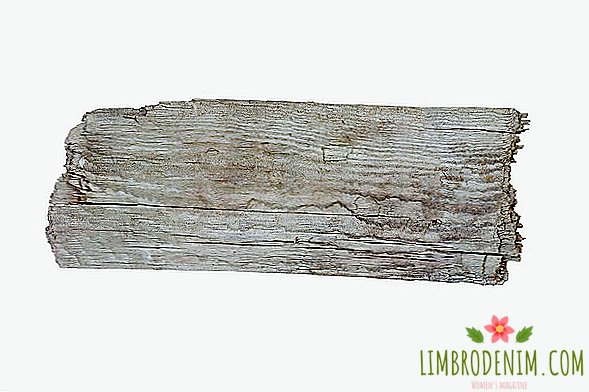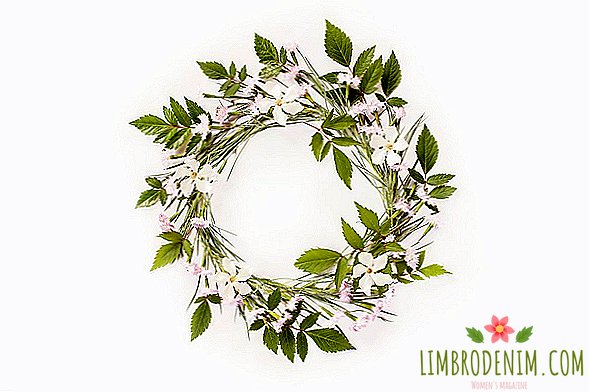Eco-Funeral: How to die without destroying nature
To determine how attitudes are changing today, The New York Times suggests the term slow funerals (“slow funerals”) - similar to slow life (“measured life”). It’s not about delaying funeral ceremonies, but about the same popular, conscious approach to everything, including the question of burial. It relies on the principles of environmental friendliness and responsibility, and also takes into account the lifetime interests and wishes of the deceased.

What is bad traditional funeral
Once cemeteries staged on the outskirts, but the cities are expanding, so today the burial sites are often surrounded by residential quarters; at the same time, the territory with burials pollutes the soil and groundwater. This is not about the decay products of human bodies: they themselves are the most eco-friendly that gets under the ground at the funeral; much more dangerous that comes with them in the kit. Coffins come from simple planed boards (these are used at the most costly graves), they can be upholstered with fabric, and wood can be varnished. Dear coffins are made of precious woods and equipped with metal fittings. In the coffin, which is usually and so upholstered from the inside with a cloth, put additional textiles: pillow and bedspread, ritual ribbons and other decorations. Do not forget about the funeral clothes, which are often purchased specifically for the ceremony.
If the body needs to be transported by plane, use hermetically sealed zinc coffins. In Russia, military personnel are most often buried this way, but in the United States the practice of burial in steel coffins is also common among civilians. But even simpler coffins affect the environment. According to the Green Burial Council, which defines the standards for "green" funerals, about 50 thousand cubic meters of wood, more than 16 million liters of embalming liquids, more than 1.5 million tons of reinforced concrete, 17 thousand tons get to the ground through traditional funerals in America alone. copper and bronze and almost 65 thousand tons of steel. The decomposition products of metals (for example, toxic salts) harm plant growth. In addition, the reserves are depleted, and using such resources only once is extremely wasteful: we bury the metal in the ground for the sake of one ceremony, and for the manufacture of coffins, entire forests are cut down (in the US alone tens of thousands of trees are spent on it).
Green Funeral Documentary Video
We should also dwell on embalming. This is a procedure that should stop the process of decomposition: it is carried out to save the body after death. It is impossible to completely stop decomposition, you can only slow it down with the help of injection of special compounds. Embalming fluid is injected via injections through arteries into the bloodstream or into body cavities through special incisions. Compositions for embalming are different: they can include formalin, mercuric chloride, alcohol, zinc chloride, glycerin. The processing of one body usually takes three to four liters of solution. The solution recognized as a carcinogen formaldehyde - formalin - is extremely toxic, and studies show that those who are often in contact with it have a higher risk of developing cancer. In addition, formalin enters the soil, and it is not good for the environment and all of us.
In cremation, the reputation of a "clean" way to dispose of the remains: only dust remains from the body, which can be dispelled by air (if, of course, laws allow it). Nevertheless, the work of crematoria is not at all harmless to the atmosphere. The combustion process produces many harmful substances, including dioxin, sulfur dioxide and carbon dioxide, affecting the climate. And all this - not counting the carbon footprint. Scattering dust to the wind can also turn out to be not at all harmless, for example, in alpine environments and places with fragile ecosystems.
There are alternative ways to deal with the ashes after cremation. For example, in the USA there is a program Let Your Love Grow, which mixes ashes with soil for plants. Another option is the eco-service Eternal Reefs: the cremated remains are mixed with a special compound similar to cement, which is used to build the dwellings of marine life.

What is a green funeral
As the funeral home clerk and the author of the Ask a Mortician blog, Kaitlin Doughty, “green” or natural funerals, is what humanity throughout history called just a funeral: they put a body wrapped in a shroud and covered with earth. neither coffins made of lacquered wood or metal, nor formaldehyde solution are used. So one cannot say that this is a new idea; rather, it is a well-forgotten old industrial society.
Natural burials are made at a lower depth than usual - in the most nutrient-rich soil layer, which contributes to rapid and natural decomposition. As noted in the Green Burial Council, if a body is buried at a depth of about a meter, and not one and a half or two, as happens in most cemeteries, wild animals will not be torn apart, but the process of decomposition will be faster. To reduce damage to nature, supporters of green burials suggest using simple coffins made of wood or woven from twigs that will quickly decompose in the ground, or replace them altogether with a shroud, for example, organic cotton. Particularly meticulous are advised to check whether objects and materials for the funeral were transported over long distances in order to assess the carbon footprint.
Lecture by Caitlin Doughty "Funerals that fertilize the planet"
Another condition for eco-friendly burial is to avoid embalming. Jeff Jorgenson, the master of ritual service in Washington, talks about ways to preserve the body before the funeral and without the use of formalin: dry ice, reusable Techniice ice, refrigeration units, non-toxic embalming fluid.
There are also special eco-friendly cemeteries - for example, the so-called forest cemeteries, where graves are located among the trees. At the same time, the natural landscape is preserved, and the cemetery looks like a quiet park with paths. Instead of gravestones, flowers, trees and shrubs can be used, and graves should be found by coordinates. Journalist Richard Koniff says that the main idea of such burials is that "people who like to spend time in the forest pay to be buried there." In the US, such burial usually costs 3-6 thousand dollars, but it allows you to save a piece of nature practically intact. The study, which published the mortality study magazine Mortality, says that there are two hundred sites for natural burial sites in the UK, about seventy now operate in America. In Japan, where this practice also extends, some women choose burial among trees as a form of “post-mortem divorce” - if they do not want to have anything in common with family graves.

Why is eco-funeral better
One of the most common questions - is it safe to bury bodies without coffins near water sources? Research says quite well: “Although there is some evidence of microbiological contamination in the immediate vicinity of cemeteries, their short lifespan suggests that the risk is small” (although scientists suggest focusing on soil type and other conditions when choosing a place for a new cemetery to additionally secure those who live nearby).
Companies that promote embalming services often stress safety: they say this practice helps maintain the health of the funerals. In fact, it’s not so dangerous to be near a dead body or to touch it. Of course, if Ebola, plague, cholera or anthrax have become the cause of death, it is better to stay away from the body. But the body of a person who died, say, from a heart attack or stroke, and without embalming will not cause any harm alive (in any case, the funeral will be held in the near future and the body will not be transported over long distances). Embalming is primarily a cosmetic procedure.
How to organize eco-funerals
If the benefits of a green funeral for ecology are obvious, then everyone defines the inner meaning for himself. Death and everything connected with it are still taboo, and when the worst happens, the relatives of the deceased are so depressed that they often automatically agree to everything that the funeral services offer. But standard rituals do not always reflect a person’s views or wishes. Some want to leave behind something significant - for example, to contribute to the development of green spaces instead of a monument, the care of which will fall on the shoulders of grandchildren. Others are comforted by the idea that their body or the body of a loved one will give life to plants.
Among other things, the "green" funeral - is a way to avoid unnecessary expenses. According to the American National Association of Funeral Services Bureau employees, the average cost of a funeral is more than eight and a half thousand dollars. According to polls, the average cost of a funeral in Moscow is from 40 to 60 thousand rubles, and that is not counting embalming and payment for the place of burial. There is a state allowance for funerals (in Moscow it is about 16 thousand rubles, in other regions it is just over 5 thousand), for which a social funeral can be organized. But the upper limit is practically non-existent - those who wish can organize an arbitrarily magnificent ceremony.
How are things with eco-friendly funerals in Russia
According to the Green Burial Council, a quarter of older Americans would like to rest in a “green” way, and the mistress of the funeral service, Amy Cunningham, notes that about the same proportion of her clients have already made such a choice. Nevertheless, this practice has not yet become a general norm even in those countries where concern for the environment is an important part of the public agenda.
Eco-friendly funerals are not particularly popular in Russia. Relation to them is still somewhat reminiscent of what exists around the deliberate refusal of packaging in stores: for some, the opportunity to go shopping for food with an environmentally friendly bag is a new conscious act, for others it is a sign of the recent past. We asked several services in Moscow and St. Petersburg if they could help hold a funeral on "green" principles. In one company, when asked to advise on the possibility of holding a funeral without a coffin, in a shroud, they reacted with bewilderment: "I have not heard, it was you who invented something, for years this is the first time." In another agency, they said that the body could be wrapped in a shroud, but clarified that the simplest coffin would still be needed to transport the body: services may refuse to carry it in an unusual way. In any case, if circumstances allow, you can refuse embalming and cremation, do not buy plastic wreaths and special clothes for the ceremony.
In Russia, there is the Voyager company, which offers non-standard funeral services, including biodegradable design coffins, mushroom spores biosavans and funerals in marine reefs, although they are much more expensive than "standard" ceremonies. Now in development is the project of the first Russian promatorium, where the bodies will be transformed into fertile compost. The technology called "promise" was recently developed in Sweden, it is based on the use of liquid nitrogen. The dust is placed in a box of corn starch and buried shallowly in the ground with the ability to plant a memorial tree at the burial site.
Nobody is immune from death. Nevertheless, it is in our power to make an informed choice and to express our will while we are still alive. Caitlin Doughty writes: “If we strive to accept, and not deny, our decay, we can find something beautiful in this. And not only accept, but admire it. Disgust turns to delight as soon as we turn the power of our feelings on that we are alive now. Someday we will die, but today our blood flows through our veins, the air fills our lungs, and we walk on this earth. "
Photo: speakingtomato - stock.adobe.com, Jo Ann Snover - stock.adobe.com, Lark





